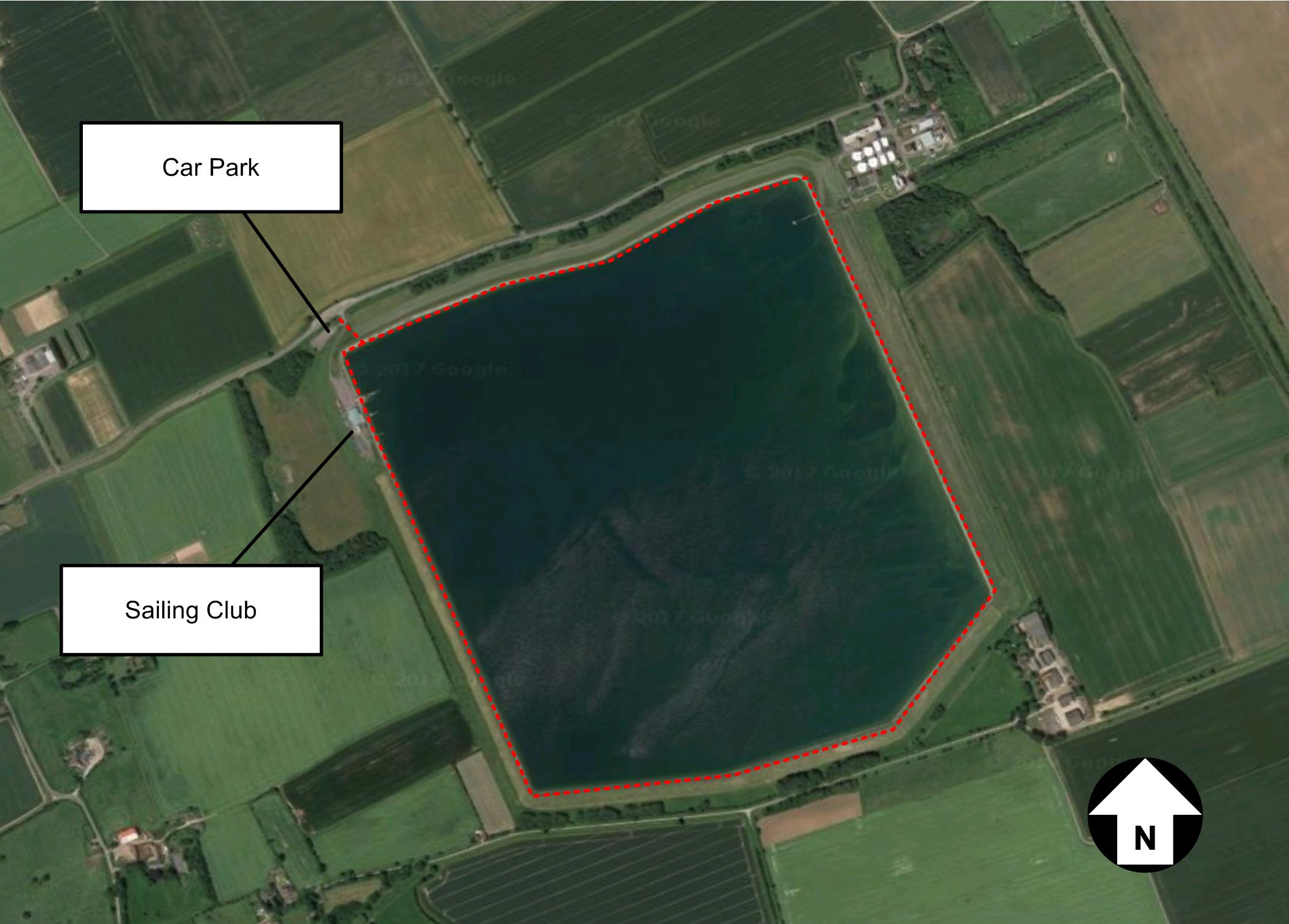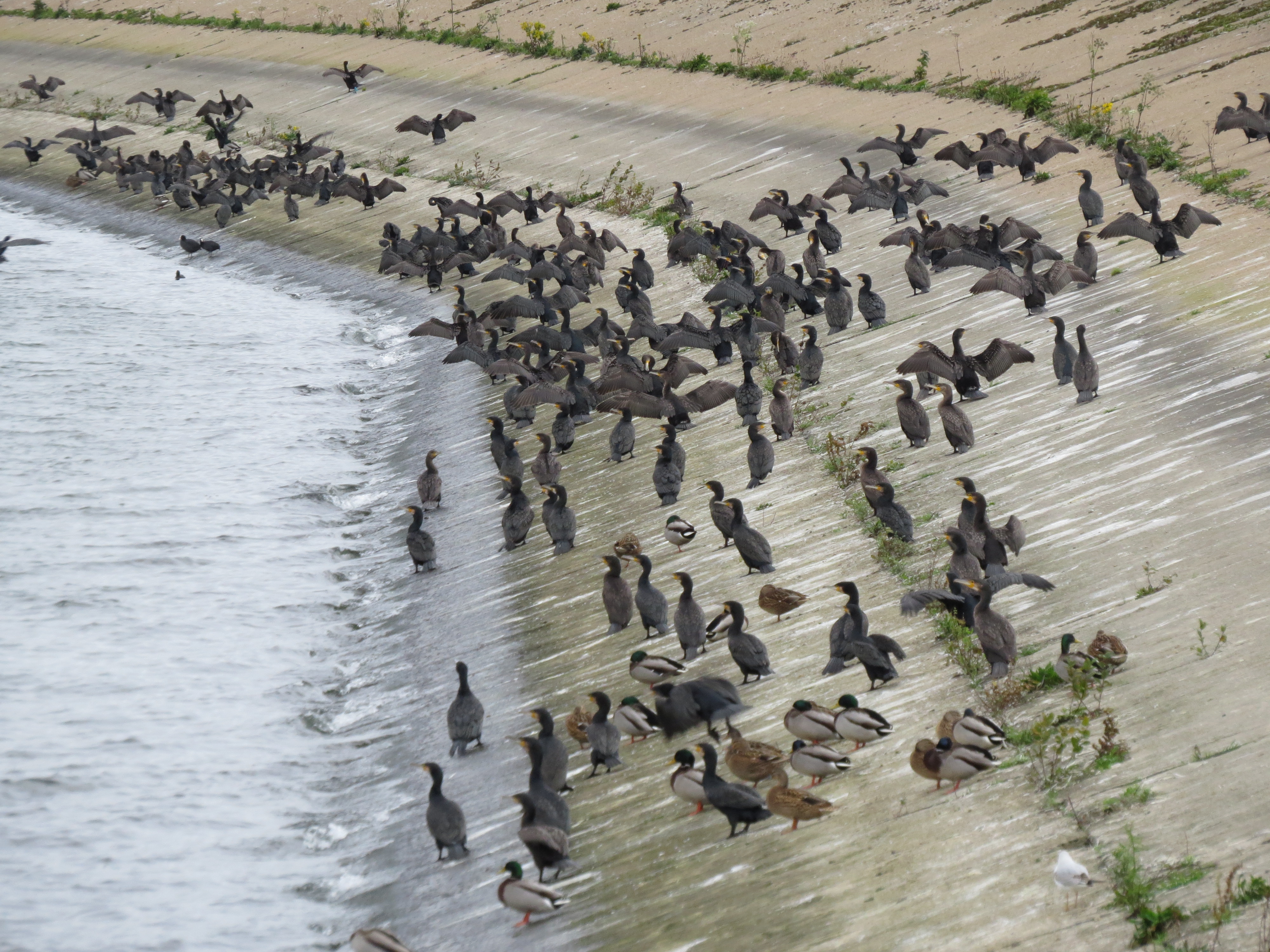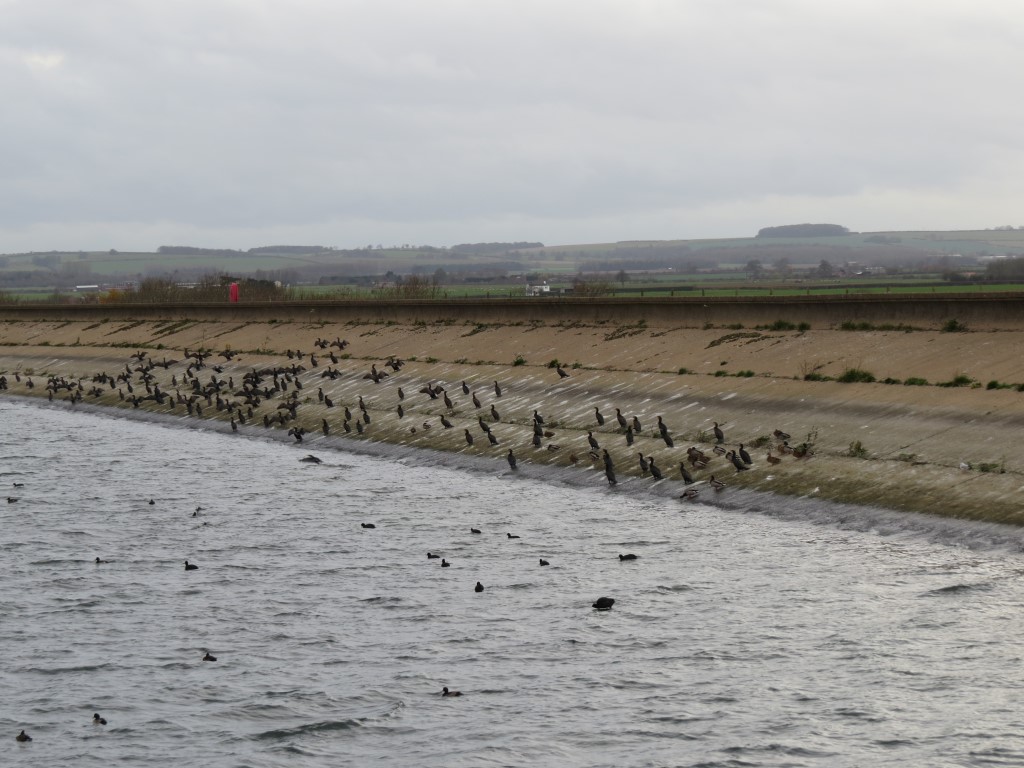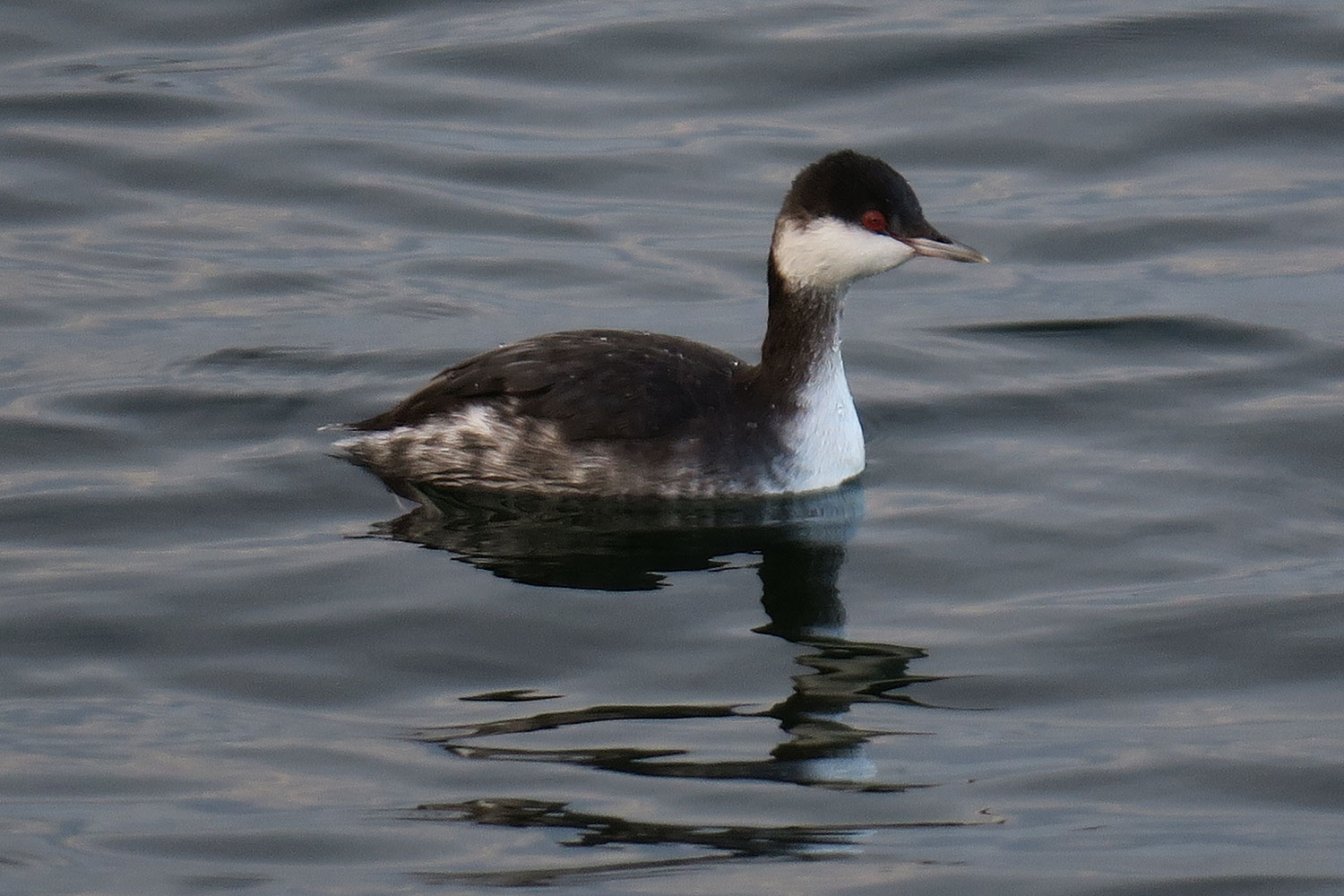Nearest Postcode: LN11 0PD (Approx)
Address: Firebeacon Lane, Covenham St Bartholomew, Louth, Lincolnshire LN11 0PA
OS Map: NGR TF 3461 9601 - X/Y co-ords: 534616, 396012 • Lat/Long: 53.4437,0.025314
How to get there
Park in the car park at the North West corner and walk up the road to the sailing club.
Covenham Reservoir
What to see
Covenham Reservoir is a 200 acre reservoir and treatment works constructed between 1963-1978. The reservoir was built next to the Louth Navigation canal and acts as a pumped storage reservoir from the canal. The Reservoir is approximately 1 km by 1 km in size and the depth is approximately 20m.
The reservoir is constructed of walls all around, raised 20m above the low lying lincolnshire marsh. The structure is concrete lined, which prevents growth of marginal plants, however this does not prevent the reservoir attracting varied waterfowl and other birds.
The number of species seen at Covenham Reservoir over the years is impressive. The limited habitats within the recorded area affect what is likely to occur there, but the occurrence of small numbers of commoner species has tended to go unrecorded, the total number of species recorded at Covenham Reservoir to the end of 2014 was 234.
Since its construction the reservoir has added four species to the Lincolnshire bird list: American Wigeon from 12th to 24th February 1974, Red-breasted Goose on 1st October 1978, Whiskered Tern from 10th to 15th June 1987, and Bufflehead on 27th April 2012. In addition it has also added a notable subspecies to the county list, namely the juvenile American Black Tern during 17th September-7th October 2011 which was only the fourth record for Britain of this distinctive form – surely worthy of elevation to full species status.
Unsurprisingly for a large water body, wildfowl, waders and terns dominate the list of rare species recorded at this site. In addition to those first records above, American Wigeon was recorded again in September-October 2003 (and again briefly in January 2004) and, amazingly, Red-breasted Goose made a further appearance in 2006 when two adults were seen on 12th October before going on to spend the winter on the Lincolnshire coast. Other rare wildfowl include single records of Green-winged Teal (2011), Ring-necked Duck (1993) and Ferruginous Duck (1974).
The concrete banks are not ideal wader habitat but nonetheless it has attracted a wide range of species and some notable rarities. Single records of Black-winged Stilt (1991), Pectoral Sandpiper (two together in 1984), Buff-breasted Sandpiper (2006), Terek Sandpiper (2014), Lesser Yellowlegs (1984) and Wilson's Phalarope (1985) are the obvious highlights. In fact phalaropes feature strongly on the list of rare birds seen at Covenham with 14 records (of 16 individuals) of Red-necked Phalarope (the first in 1974) and 17 records (of 19 individuals) for the more pelagic Grey Phalarope (the first in 1972). The more sheltered waters of the reservoir no doubt helped make this – until the Gibraltar Point movement of October 2014 – the single best site in the county for the latter species. The charts below show the differing seasonal patterns of occurrence of the two species, with Red-necked an autumn species and Grey later in autumn and in winter. It is also interesting that the Red-necked Phalarope records are concentrated in the period up to the early 1990s, with only one since then; there is no obvious reason for this. Additionally the reservoir has proved quite an attraction for Temminck's Stint with 17 records (of 21 individuals) since the first on 30th May 1974.
During migration periods, passage terns are attracted to this area of water under suitable weather conditions and several rare species have been recorded. In addition to the Whiskered and American Black Terns mentioned above, the other star tern has to be the first winter Gull-billed Tern which spent four weeks at the reservoir from 16th September to 14th October 1972. This was only the third county record at the time and 44 years on remains the only twitchable individual seen in Lincolnshire. This site also has an affinity with White-winged Black Tern, attracting nine birds since the first on 8th August 1974 and therefore comprising a quarter of all county records.
Rare passerines may not be the first thing one would associate with a reservoir of this nature but Covenham has produced its fair share. The abundant insects around the reservoir walls and banks in the spring provide a feast for passage wagtails, especially Yellow, and in amongst these have been several considered at the time to be Grey-headed Wagtail or Ashy-headed Wagtail and, on 27th May 1991, a bird resembling the eastern form, Sykes's Wagtail. However, the identification of these subspecies is notoriously tricky, and these records especially of Ashy-headed and Sykes’s require re-evaluation; note that Sykes’s Wagtail is not currently on the British list. The grassy banks and patchy scrub have proven productive over the years, the most celebrated bird perhaps being the first winter Barred Warbler which was present in bushes on the south bank from 20th November to 9th December 2004. This obliging bird was the first inland record for the county. Wryneck has twice made an appearance (1971 and 1986) and the four records of Shore Lark (1971, 1972, 1976 and 1986) are exceptional for an inland site (there is only one other inland record for the county). Even more remarkable are, perhaps, the four records of Ortolan Bunting (May 1982, two in May 1983 and one in April-May 1987), the only inland records for the county and a strangely concentrated set of records.
To round off the rarity review some of the other significant rarities the site has produced include a storm-blown Leach's Petrel on 21st September 1985, a Glossy Ibis in September 2009, two records of Spoonbills (one in 1996 and two in 2014), a Crane which flew south in April 1990, and a couple of scarce raptors with single Rough-legged Buzzard and three records of Montagu's Harrier.
A full article on all the species record at Covenham can be read by following the link: Birds of Covenham 1970 - 2014
Site Details, footpaths, viewpoints etc..

Acknowledgements
The information shown on this page is produced as a general site guide and was considered correct at the time of writing. Users are responsible for their own safety and follow the information at their own risk. Users should consider not only the onsite conditions but also weather, tides, time of day, obstacles and onsite signage. Always follow the birdwatchers' code.
We are always keen to keep the birding site pages as up to date as possible, please send new information, additional photographs and comments to info @ lincsbirdclub.co.uk - Thanks!
Information by: Andrew P. Chick
Date: Dec 2017



